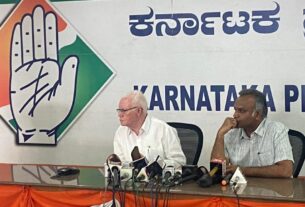The emergence of power loom sector in the making of the famous North Karnataka based Ilkal sarees has led the handloom sector to incur huge financial losses.
By Rudrankar Raha
Bengaluru, Mar 14, 2019: Mainuddeen was bathing in sunlight and enjoying his Sunday afternoon, when the softcopy team met him at his humble abode at Dotihal, a village in Koppal district of Hyderabad, in the state of Karnataka.
“I left the saree-making industry two-three years ago. The amount which the KaimagyaNikharaSangaSangsthe, a saree-making association, was paying was not enough for our livelihood. I worked at the organisation for about 15-18 years and then decided it was time to leave, a couple of years back,” said the former Ilkal saree weaver.
“The profit per saree was not even Rs 100 and it takes three days to make one in the handloom sector,” added Mainuddeen. His only source of income now is through the farming he does.
The general consensus among the saree-weavers in the handloom sector is that they do not earn much by weaving the saree, named after a town in Bagalkot district of Karnataka.
“A single Ilkal saree costs Rs 1,000. Out of which we only get Rs 300, the rest of the amount goes in buying raw materials,” said one of the saree weavers based out of Dotihal.
In recent times, there has been an emergency in the power loom sector, which has created a sense of competition in the market for the handloom sector, and it has, in fact, overshadowed the traditional handloom sector.
Mallikarjun, a local reporter while giving his insights on the issue said, “The power loom sector is fast-paced. They are able to produce four sarees a day and it costs around Rs 6,000. Whereas it takes around two days to produce a saree in the handloom sector, and the cost of saree is marked quite low at Rs 1,000.”
The quality of sarees produced in the power loom sector is poor and their design is in a bad shape due to heat in the factories.





